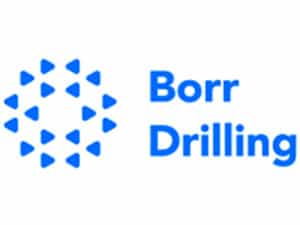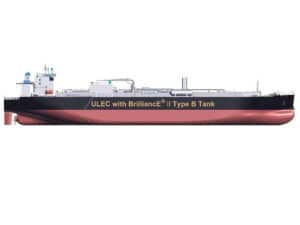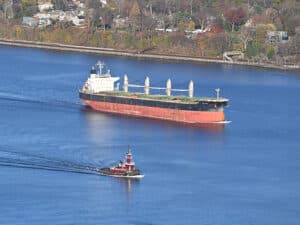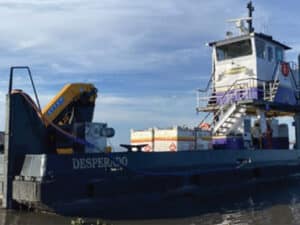
Clarksons: Alternate-fueled vessels take a record share of world newbuilding orders
Written by Nick Blenkey
Clarkson’s Research reports that the first half of 2022 saw a record 268 alternate-fueled newbuilding vessels ordered, totaling 22 million gross tons and with a total contract value of $38 billion.
This constituted 61% of all newbuild orders in tonnage terms, 38% on the basis of vessel numbers and 68% of overall contract value. Excluding LNG carriers, the number of vessels was 174, totaling 11.9 million gross tons with a total contract value of $18.4 billion (equating to 46% of gross tonnage, 29% of vessel numbers and 51% of contract value).
Here are some other interesting numbers from Steve Gordon, managing director at Clarkson’s Research:
- More than half (59%) of these alternately fueled newbuilds (226 orders totaling 21.0 million gross tons) will be LNG dual fueled. Another 1.6% will be methanol fueled and 0.3% will be ethane fueled and 0.8% include battery hybrid propulsion. In addition, a further 16.3% of orders were “ammonia ready,” 0.8% of orders were “LNG ready” and 0.1% of orders have been “hydrogen ready.”
- This all adds up to more than 100% of the alternative fuels capable total as there is an increasing trend for orderers to opt for multiple fuels/ fuel-ready vessels to provide future optionality.
- Putting things in context, in 2021, 31.7% of newbuild tonnage ordered was for alternative fuel capable vessels (459 units), up from 211 orders in 2020 and 46 orders in 2016.
- Uptake of alternative fuels has continued to progress, with 4.7% (2021: 3.9%, 2017: 2.2%) of the fleet on the water and 41.3% (2021: 27.8%, 2017: 11.8%) of the orderbook in gross tonnage terms capable of using alternative fuels or propulsion.
- Clarksons is projecting that 5% of global fleet capacity will be alternate-fueled by the start of 2023.
- Of the orderbook, 37.3% of tonnage is set to use LNG (741 units), 2.2% to use LPG (87 units) and 3.3% due to use other alternative fuels (c.220 units; including methanol (24), ethane (9), biofuels (7), hydrogen (6) and battery/hybrid propulsion (c.180)).
- Over 307 ships in the fleet and 98 on the orderbook are designated “LNG ready,” while there are now 115 “ammonia ready” and 8 “hydrogen ready” vessels on order.
- Scrubbers are now fitted to over 4,730 ships in the fleet (24.5% of total gross tonnage). While scrubber retrofitting activity has slowed (June 2020: ~100 per month, June 2022: ~15 per month), newbuild uptake grew slightly in 2021, with 268 newbuild orders for scrubber-fitted units reported across the full year, including 198 containerships; 26 scrubber fitted units have been ordered in 2022 so far.
- The current price differential between HSFO and VLSFO is significant (Rotterdam/Singapore: $310/$513), close to previous highs (Jan 2020: ~$330). Clarksons expects the share of global tonnage with a scrubber to grow marginally to 24% by the start of 2023.
- Energy saving technologies (ESTs) have been fitted on over 5,300 ships, accounting for 23.6% of fleet tonnage: including propeller ducts, rudder bulbs, Flettner rotors, wind kites and air lubrication systems.
- The average age of the world fleet is increasing. For the bulk carrier fleet it is 11.4 years (vs 8.7 years five years ago), for tankers it is 12.0 years (2017: 10.3 years) and for the container fleet it is 14.1 years (2017: 11.6 years). Today, 28.2% of global tonnage is today aged over 15 years.
- Clarksons estimates that under IMO’s CII regulations, around 40% of today’s tanker, bulkcarrier and container fleets will be D or E rated if they are still trading in 2026 and have not modified speed or specification.
- The overall orderbook as a percentage of fleet capacity is ~10% – the figure is 27.8% for containers, 7.2% for bulk carriers and 5.2% for tankers.
- Green port infrastructure is continuing to expand. There are currently 148 active LNG bunkering ports (and 95 planned facilities), while over 1,500 vessels have been fitted, or are set to be fitted with shore power connections;
- BWMS retrofits are ongoing, with the majority of tonnage in the world fleet (65.8%) now BWMS-fitted.
“The Green Transition will cause fundamental change to shipping, trade, offshore and energy,” says Clarksons Research. It says it is committed to providing data and intelligence to help frame the critical decisions that stakeholders across the industry will need to make. More on the Clarksons Group’s offerings related to the Green Transition, including consultative and broking support HERE.




